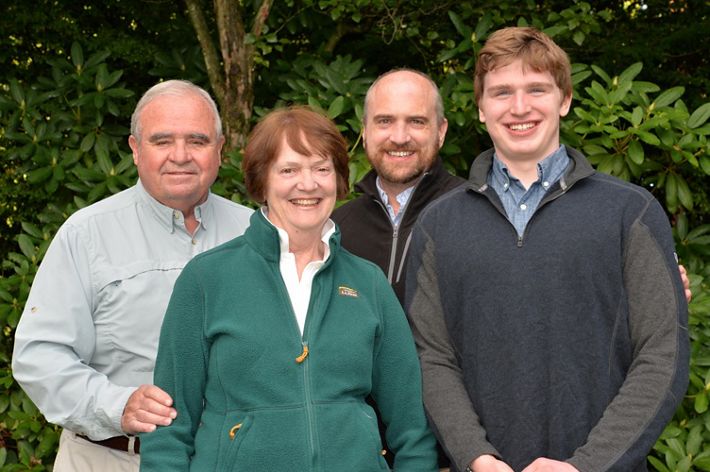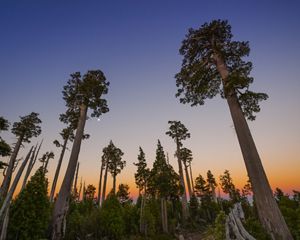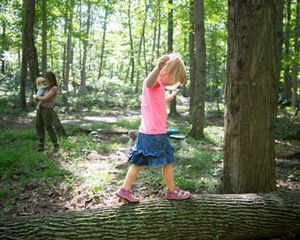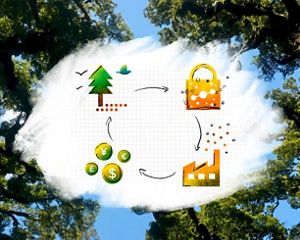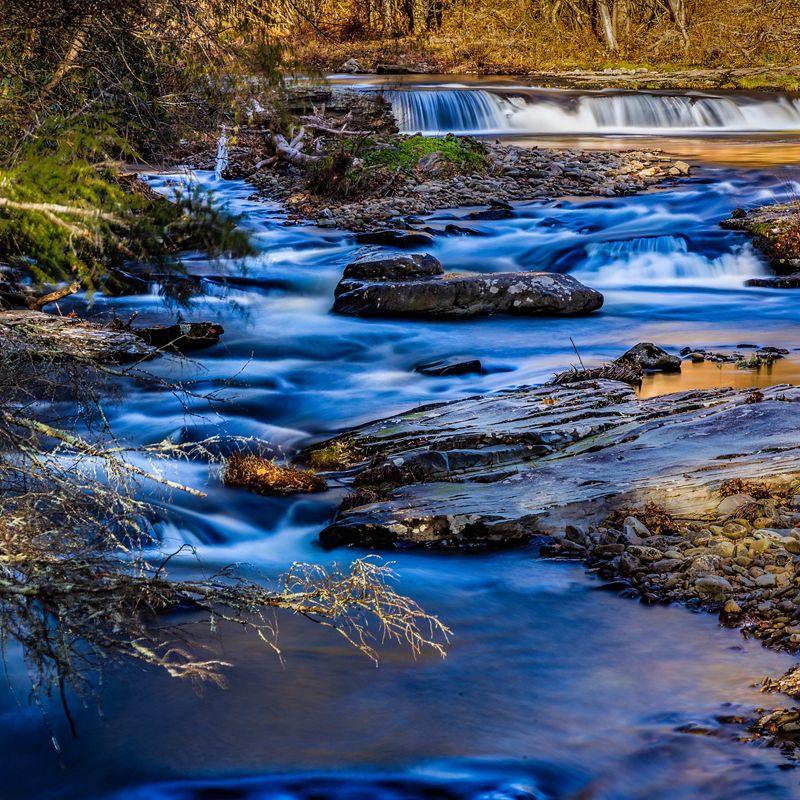
Family Forest Carbon Program
The program helps small landowners become climate players.
This story is part of our Living Carbon series, covering the power of natural climate solutions for communities, biodiversity and the planet. > Explore the Living Carbon stories.
Halfway between Philadelphia and New York, nestled in the Pocono Mountain area of the Delaware River, is the 100-acre parcel of forest owned by Karren DeSeve and her family. It was a passion for fly fishing that first drew the DeSeves to this land and inspired them to buy it when it came up for sale a few years ago. But it’s their desire to be positive forest stewards and leave something better for the next generations that led them to join a new initiative with the potential to revolutionize the role of forests in America’s climate response.
Like many, Karren was amazed to discover that nearly 40% of forests in the U.S. are owned by families or individuals, on properties with an average size of just 67 acres. This little-known fact is the motivation behind the Family Forest Carbon Program (FFCP), recently set up by The Nature Conservancy and the American Forest Foundation.
The program is unique in two ways. First, it opens up a pathway for small forest owners to improve forest health and help mitigate climate change while earning an income to cover the cost of taking care of their land. Second, it’s the first program of its kind to employ a groundbreaking carbon accounting methodology that brings the latest science together with innovative business models to provide high quality carbon credits while keeping upfront costs low for family forest owners.
Global Insights.
Access the latest reports, tools & in-depth thinking on real-world solutions to climate change, water security, biodiversity, and human health.
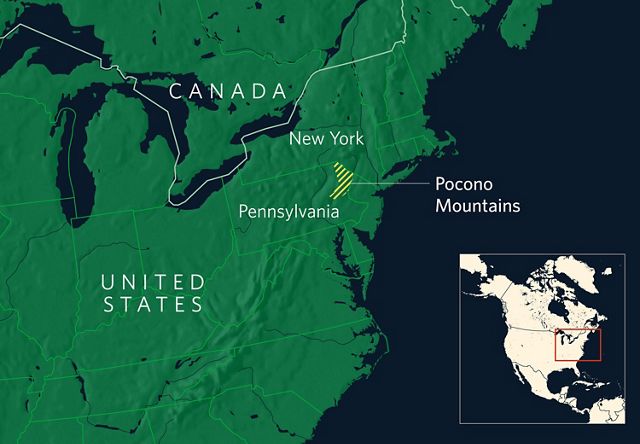
A Chance for Something Bigger
For Karren’s son Gerry, signing up to the FFCP was a no-brainer. The program gives the family the incentive and expertise they need to make their small forest part of something much bigger and build a lasting legacy.
“The program united our family around the idea of being multi-generational stewards of the forest as a carbon asset. We began to move past the idea of ‘holding the line’ by just maintaining the forest as it was, and instead began exploring new opportunities for generating lasting climate benefits,” said Gerry.
Until now, family forest owners like the DeSeves have been unable to access the financial benefits of carbon markets because of high upfront costs and complex red tape. That not only cut them off from an emerging new income stream, but also seriously diminishes the potential of American forests to help address climate change. Because the reality is that forest management is expensive; access to voluntary carbon markets can help offset costs and give owners more options beyond cutting down trees.
Quote: Gerry DeSeve
The program united our family around the idea of being multi-generational stewards of the forest as a carbon asset … and exploring new opportunities for generating lasting climate benefits.


Unlocking Natural Climate Solutions
To meet the Paris Agreement goal of limiting global warming to no more than 1.5°C—and avoid catastrophic climate change—countries need to rapidly transition to ‘Net Zero’, which many governments and companies have pledged to do. That means cutting carbon emissions to as close to zero as possible and ensuring all remaining emissions are re-absorbed from the atmosphere, primarily by natural carbon ‘sinks’ like forests and other carbon-rich ecosystems.
That’s why the latest assessment issued by the UN’s Intergovernmental Panel on Climate Change (IPCC) names ecosystem restoration as one of the top five most cost-effective climate actions we can take in the next few years. In fact, if scaled up now, natural climate solutions—like protecting and restoring forests and other land and seascapes—could provide around a third of the urgent emissions reductions needed by 2030.
The Family Forest Carbon Program is democratizing access to the market for forest carbon credits and empowering small landowners to become key players in meeting global climate goals.
But to get to Net-Zero, we need all hands on deck. Everyone has a role to play, including the thousands of landowners with the power to unlock natural climate solutions by boosting the carbon storage power of their forests, and the companies working to reduce their carbon footprints. FFCP is democratizing access to the market for forest carbon credits and empowering small landowners to become key players in meeting global climate goals.
How the Family Forest Carbon Program Works
So, how does it work? The FFCP pays family forest owners annually to carry out climate-smart forestry that increases the amount of carbon sequestered and stored by their forest. Under the new carbon accounting system being pioneered by the program, the additional carbon is calculated using a method inspired by the control groups used in medical trials. It determines the true climate benefit—or ‘additionality’—by comparing the amount of carbon sequestered on lands enrolled in the FFCP to very similar “control” forests not enrolled in the program.
By measuring the difference between the forests in real time, the methodology can pinpoint the program as the sole variable contributing to the extra carbon benefit, providing increased accuracy and credibility to the marketplace. The amount of gross carbon attributed to the project is then converted into verified carbon credits and sold to companies to help offset their unavoidable emissions.
The Family Forest Carbon Program began enrolling landowners in 2021 and is so far responsible for sequestering more than 1 million tons of CO2e—equivalent to 264,560 car emission offsets (as of January 2025). Looking ahead, the goal is to catalyze the enrollment of 20% of U.S. family-owned forest acres in climate-friendly practices and sequester about 50 million tons of CO2e every year.
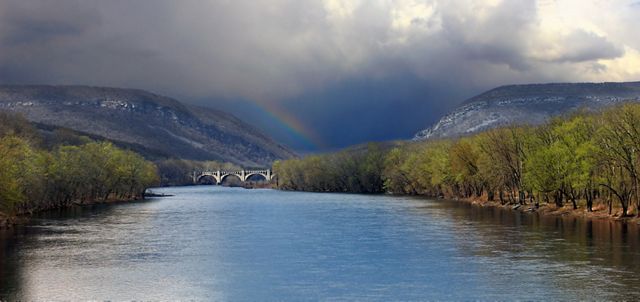
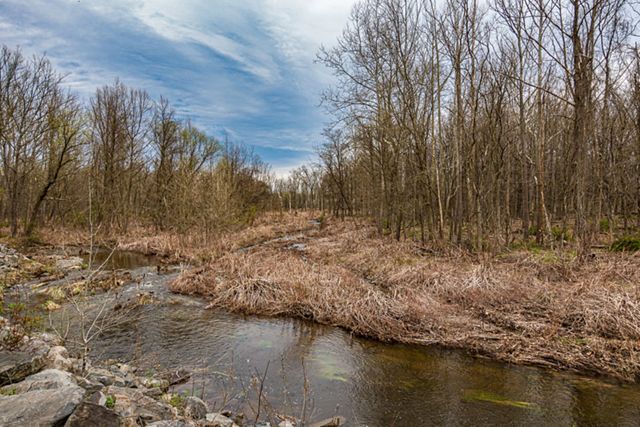
Our global insights, straight to your inbox
Get our latest research, insights and solutions to today’s sustainability challenges.
Sign UpSeeing the Forest in a New Light
But for Karren DeSeve, the best thing about FFCP is that it is giving her family the professional expertise and guidance needed to proactively improve the health of their forest. Without it, despite the best of intentions, they would probably still be among the 80% of family forest owners who have never met with a forester, and the nearly 90% who have no written forest management plan. Instead, they are working with FFCP’s senior forest manger, Sarah Hall Bagdonas, to create a bespoke long-term plan for their forest that will benefit not only carbon storage, but also wildlife, water quality, and wildfire control.
Being so close to two major cities, the pressure to develop this area of the Poconos in north-east Pennsylvania is immense and too much of the forest has already been lost. Stopping the sprawl of development and protecting the creek where they love to fish was the DeSeve’s original motivation behind buying the land. But now Karren says they want to do much more: “Not only are we preventing development, but we’re looking at the land in a very special way and asking how do we preserve these trees, raise new trees?” She would like to see continuous planting of new native species to add different layers of forest, so her 16-year-old grandson Dean will see young trees growing alongside him. “FFCP is a wonderful opportunity to set an example for our grandson, to help us focus on how we can best steward this land.”
With Sarah’s help, they are also exploring ways to improve water quality in the creek—part of the Delaware River watershed that supplies drinking water to Philadelphia and New York—deal with invasive species, nurture wildlife habitats, and regenerate eroded soil so it locks in more carbon and prevents future degradation. And Gerry has big plans to grow mushrooms in the forest to enhance biodiversity and add extra carbon sequestration potential. In his view, FFCP is giving the family the chance to make things right in the forest while paying them to make smart decisions.
Quote: Forest Landowner Karren DeSeve
FFCP is a wonderful opportunity to set an example for our grandson, to help us focus on how we can best steward this land.
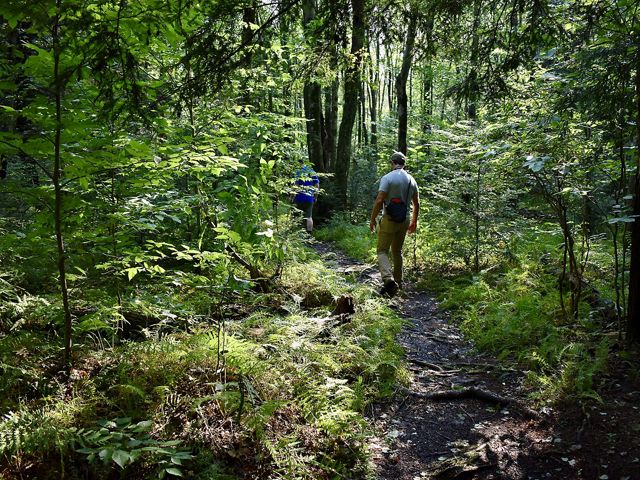
Becoming Part of the Climate Solution
Committing to a 20-year contract with FFCP gives forest owners an incentive to keep focusing on the health of the forest and maximizing its carbon storage potential. And the DeSeves love knowing that they are making a positive net contribution towards fighting climate change. As new forest owners, they are surprised by how much joining the program has shifted their perspectives. Before, they saw the effects of climate change on their land—including flooding, erosion, and trees dying prematurely—as irreversible. Now they know they can be part of the solution.
According to Sarah, a mature forest the size of the DeSeve’s enrolled in FFCP can remove about the same amount of carbon dioxide from the atmosphere every year as is emitted by consuming 360,000 gallons of gas. And according to studies by TNC, the carbon storage potential in forests can be nearly doubled by implementing targeted forest management practices. Multiply this by thousands of small forests across the U.S.—and beyond—and it’s clear that family forest owners can become a game-changing new climate ally.
Karren and her family love walking through their forest, where they’ve seen bears, wolves, coyotes, beavers and at least 30 species of birds. Three generations of DeSeves are now invested in this 100-acre wood and excited to be at the vanguard of a new movement of small forest owners making a big difference.
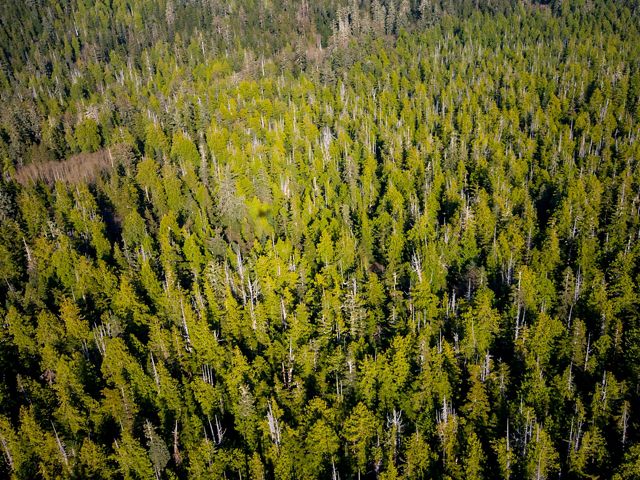
Living Carbon:
Stories of Nature's Climate Solutions
In this series, we showcase innovative carbon projects in Africa, northeastern Pennsylvania, Chile's Valdivian Forest, and the Emerald Edge along North America's Pacific coast.
Explore the Living Carbon series >
Global Insights
Check out our latest thinking and real-world solutions to some of the most complex challenges facing people and the planet today.
